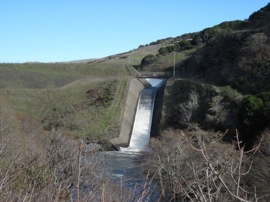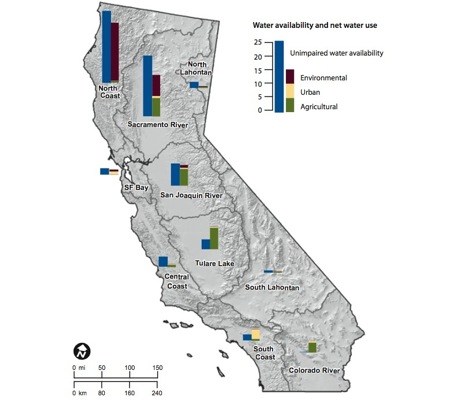Report: Big changes needed to avert “widespread environmental and economic losses” in California

A high-profile team of experts is calling for a major overhaul of the way California manages its water. In a 500-page report from the non-partisan Public Policy Institute of California, the authors say decades of well-intended water policies simply haven’t worked, leaving the state vulnerable to major crises, including water shortages, catastrophic floods, decline & extinction of native species, deteriorating water quality, and further decline of the Sacramento-San Joaquin Delta.
“Our system has been dying a death by a thousand cuts,” says co-author Ellen Hanak, an economist and policy analyst at the PPIC. Hanak says that the state’s water management efforts have been “incremental” and “piecemeal,” with little success to show for it.
Among many other conclusions, the report says water management in the state is too fragmented among hundreds of local agencies and the funding for future improvements should shift from bond issues to a system of fees paid by water users.
“It’s not gonna be easy. It’s not gonna be popular. It’s probably cheaper than the alternatives,” said Jay Lund of UC Davis, one of the co-authors. “There’s not much state money and there’s not much federal money, so if you want to accomplish things for the environment and for water supply and flood control, it’s gonna have to be financed largely locally,” Lund told reporters during a Wednesday conference call.
The report also echoes other recent warnings that Californians are dangerously overdrawn on the state’s underground aquifers.
But there were some notes of optimism. The team of authors, drawn from the PPIC, U-C system and Stanford, say that if cities can cut back water use by 30% from 2000 levels, it would remove a huge strain on the crippled Sacramento-San Joaquin Delta.
The map below, featured in the report, shows areas where Californians are “overdrawn” in their water use.
One thought on “What Will Your Water Cost?”
Comments are closed.


Considering the dire state of affairs which is bound to continue – with population and usage increasing, not the supply of water. Why hasn’t California tried charging customers the true cost of water to bring consumption in line with supply? Also with an awareness and information campaign about the true status of this precious resource and ways of reducing usage which are imperative to our long term survival in this wonderful State.